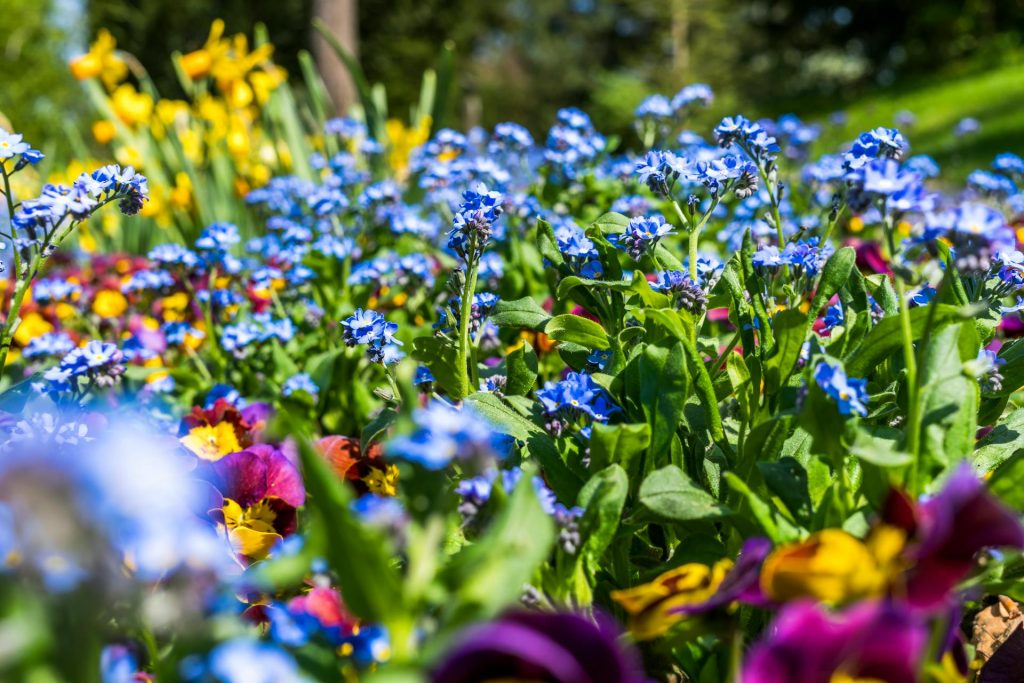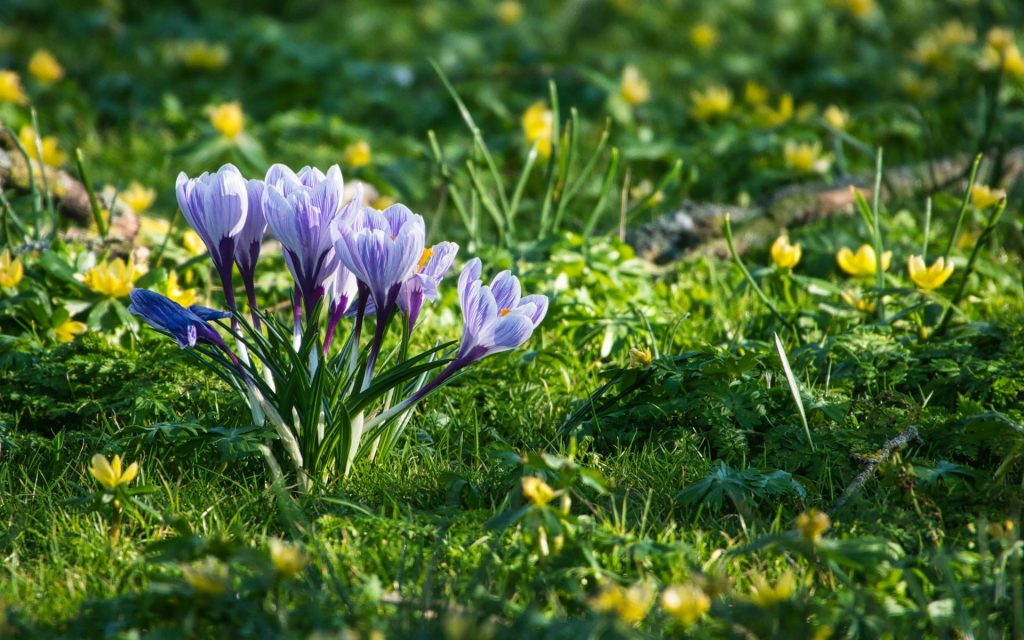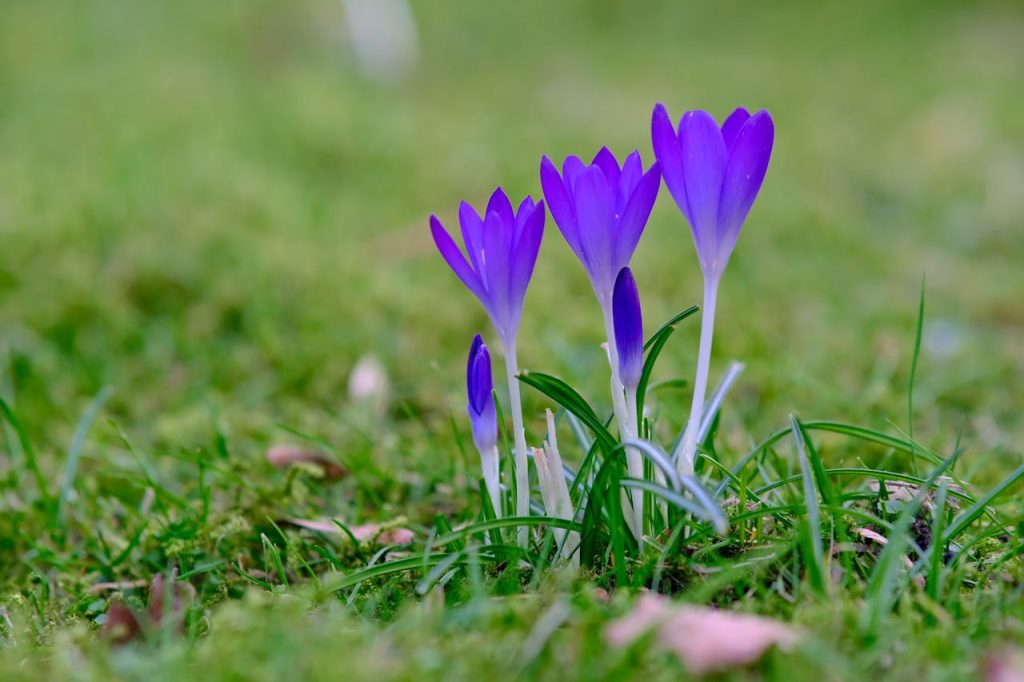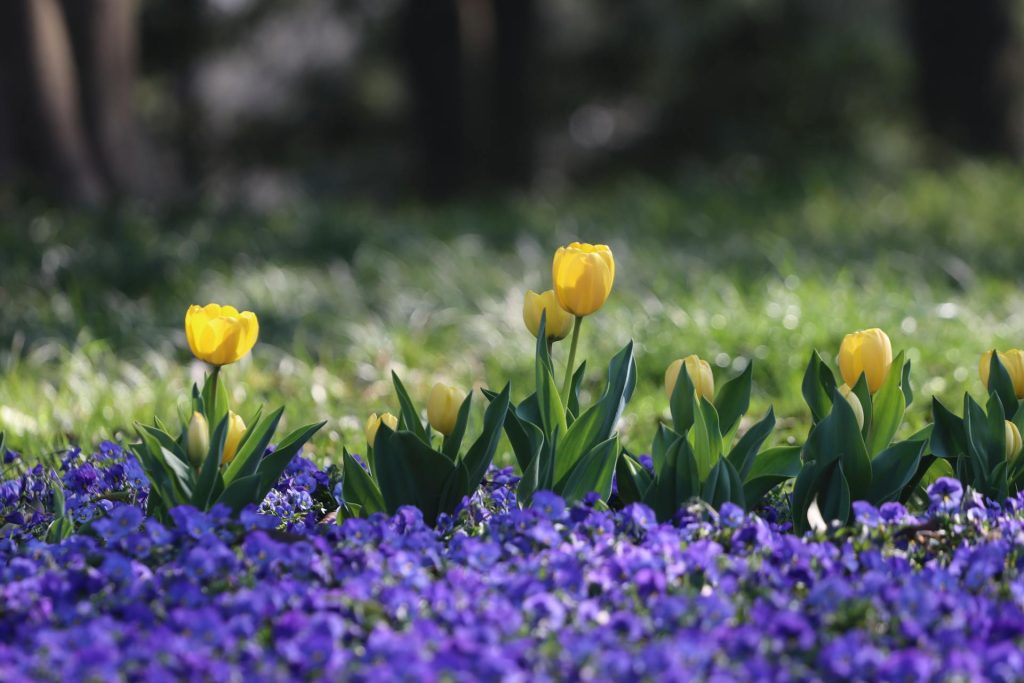When July temperatures climb above 80°F, many gardeners watch their beloved pansies wilt and struggle. These cheerful flowers evolved in cooler European climates, making our hot summers particularly challenging for them. Unlike heat-loving marigolds or zinnias, pansies prefer temperatures between 45-65°F for optimal blooming.
The stress from excessive heat causes pansies to stop flowering, develop leggy growth, and become more susceptible to diseases and pests. Many varieties that thrive in spring will simply shut down when temperatures consistently reach the upper 70s and beyond.
However, with the right approach, you can keep these charming flowers blooming well into summer. I’ve spent years experimenting with different techniques in my own garden, and I’ve discovered five key strategies that make all the difference. These methods focus on variety selection, strategic placement, proper watering, soil management, and targeted care practices that work together to create a cooler microenvironment for your pansies.

Pick Heat-Tolerant Varieties
Not all pansies handle summer heat equally. The standard varieties you find at garden centers in spring often struggle once temperatures rise, but plant breeders have developed several heat-tolerant options specifically for challenging climates.
Select ‘Heat Elite’, ‘Matrix’
The ‘Heat Elite’ series stands out as one of the most reliable choices for summer growing. These pansies can tolerate temperatures up to 85°F while maintaining their blooming schedule. I’ve grown ‘Heat Elite Purple’ and ‘Heat Elite Yellow’ in my own garden, and they consistently outperformed standard varieties by six to eight weeks.
‘Matrix’ pansies offer another excellent option, with compact growth habits that help them conserve energy during stressful periods. The ‘Matrix Clear White’ variety particularly impressed me last summer when it continued blooming through two weeks of 90°F days.
Other heat-tolerant options include the ‘Cool Wave’ series and ‘Freefall Mix,’ both bred specifically for extended season performance.
Buy Disease-Free Young Plants
Starting with healthy, vigorous plants gives you a significant advantage in the heat battle. Purchase transplants from reputable nurseries, and examine them carefully for signs of disease or stress before buying.
Look for plants with dark green foliage, sturdy stems, and no yellowing leaves. Avoid any with brown spots, wilted appearances, or root systems that appear circled around the pot. Young plants typically adapt better to heat stress than older, established ones that have been in containers for extended periods.
Start Seeds Indoors for Vigor
Growing pansies from seed allows you to time their development perfectly for summer conditions. Start seeds indoors 10-12 weeks before your last expected frost date. This timing ensures your plants reach maturity during cooler spring weather and develop strong root systems before summer heat arrives.
I prefer starting seeds in late January for my zone 7 garden. The controlled indoor environment produces stronger, more adaptable plants than direct-seeded varieties, and you’ll have a much wider selection of heat-tolerant varieties available in seed form.
Give Partial Shade Daily
Creating the right light conditions is perhaps the most critical factor in summer pansy success. While pansies need some sunlight to bloom, too much direct sun during hot weather will quickly stress and damage them.
Plant Near Taller Companions
Strategic companion planting provides natural shade protection during the hottest parts of the day. I plant my pansies on the east side of taller flowers like cleome, cosmos, or ornamental grasses. This arrangement gives the pansies morning sun for blooming while shielding them from intense afternoon heat.
Vegetables like tomatoes or pepper plants also make excellent companions, as their broad leaves create dappled shade. The key is choosing plants that won’t compete heavily for nutrients or water while providing the necessary protection.
Use Shade Cloth 30–40%
Shade cloth offers precise control over light levels and can be the difference between thriving pansies and stressed plants. A 30-40% shade cloth reduces light intensity without creating too much darkness for proper flowering.
Install the cloth on a simple frame system that allows easy removal during cooler weather or cloudy periods. I use lightweight PVC pipes to create removable structures over my pansy beds. During heat waves, this setup has kept my plants blooming when unprotected pansies in neighboring gardens had completely shut down.
Rotate Pots to Cooler Spots
Container-grown pansies offer the flexibility to move them as conditions change. During the hottest parts of summer, relocate pots to areas that receive morning sun and afternoon shade.
I keep my potted pansies on a wheeled plant caddy, making it easy to shift them to the north side of my house during extreme heat events. This mobility has extended my pansy season by several months compared to fixed plantings.

Water Deep, Water Early
Proper watering technique becomes crucial when helping pansies survive summer stress. Shallow, frequent watering encourages weak root systems and increases heat stress, while deep, less frequent watering builds resilience.
Soak Root Zone 6-8 Inches
Deep watering encourages roots to grow downward into cooler soil layers. Apply water slowly and thoroughly until moisture penetrates 6-8 inches deep. This typically requires 15-20 minutes of slow watering with a soaker hose or drip irrigation system.
Check soil moisture by inserting a wooden dowel or your finger deep into the soil. The bottom third of the root zone should remain consistently moist, even as surface soil dries between waterings.
Dawn Watering Cuts Loss
Timing your watering makes a significant difference in water efficiency and plant stress reduction. Early morning watering, between 5-7 AM, allows plants to absorb moisture before daily heat stress begins.
I’ve measured soil temperatures in my garden and found that morning watering keeps root zones 5-8 degrees cooler throughout the day compared to evening watering. This temperature difference significantly reduces plant stress during peak heat hours.
Avoid Wetting the Foliage
Wet leaves in hot weather create ideal conditions for fungal diseases and can actually intensify heat damage through lens effects from water droplets. Direct water at the soil level using soaker hoses, drip irrigation, or careful hand watering.
When hand watering, I use a watering wand with a long reach to direct water precisely at the base of plants. This technique keeps foliage dry while ensuring thorough root zone saturation.
Mulch to Keep Roots Cool
Soil temperature control provides one of the most effective ways to reduce pansy stress during hot weather. Proper mulching creates a cooling layer that can lower root zone temperatures by 10-15 degrees.
Lay 2 in. Compost or Bark
Apply a 2-inch layer of organic mulch around your pansies, extending the coverage slightly beyond the plant’s drip line. Shredded hardwood bark, compost, or aged leaf mold all work excellently for this purpose.
I prefer using compost because it provides cooling benefits while slowly releasing nutrients as it decomposes. The dark color absorbs less heat than lighter-colored mulches, and the organic matter improves soil structure over time.
Refresh Mulch Every Month
Mulch breaks down quickly in hot weather, losing its insulating properties as it decomposes. Check your mulch depth monthly during summer and refresh it as needed to maintain the 2-inch depth.
I typically need to add a half-inch of new mulch every 3-4 weeks during the hottest months. This maintenance schedule ensures consistent temperature control throughout the growing season.
Leave Stem Base Uncovered
While mulch provides excellent root cooling, avoid piling it directly against plant stems. Leave a 2-3 inch circle of uncovered soil around each plant to prevent moisture retention that could lead to stem rot or fungal issues.
This spacing allows air circulation around the plant base while maintaining the cooling benefits for the root system.

Use Light Liquid Fertilizer
Summer-stressed pansies need nutrition but can’t handle heavy feeding schedules that work well in cooler weather. Gentle, consistent fertilization supports continued blooming without adding stress.
Feed ½-Strength Every 2 Weeks
Mix liquid fertilizer at half the recommended strength and apply it every two weeks during the growing season. This approach provides steady nutrition without overwhelming stressed plants with excess salts or nutrients they can’t process efficiently.
I use this reduced feeding schedule from June through August, then return to full-strength applications when temperatures moderate in fall.
Pick Balanced 10-10-10 Mix
A balanced fertilizer with equal ratios of nitrogen, phosphorus, and potassium works best for summer pansies. The 10-10-10 formulation provides adequate nutrition without pushing excessive leaf growth that increases water needs.
Avoid high-nitrogen fertilizers during hot weather, as they encourage soft growth that wilts easily and attracts pests. Balanced nutrition helps plants maintain steady growth and flowering without additional stress.
Rinse Salts from Soil Monthly
Regular fertilization can build up salt levels in soil, particularly in containers where salts can’t leach away naturally. Once monthly, apply plain water slowly and thoroughly to flush accumulated salts from the root zone.
For containers, water until runoff appears from drainage holes, then continue watering for another 5 minutes. In garden beds, apply 1-2 inches of plain water to encourage salt movement below the root zone.
Deadhead and Trim Often
Regular grooming keeps pansies blooming and prevents them from wasting energy on seed production during stressful periods. Consistent maintenance also improves air circulation and reduces disease pressure.
Snip Spent Blooms Promptly
Remove faded flowers immediately after they finish blooming, before seed pods begin forming. Use clean scissors or pruning shears to make precise cuts just above the next set of leaves or flower buds.
I deadhead my pansies every other day during peak blooming periods. This frequent attention keeps the plants looking tidy and encourages continuous flower production even during warm weather.
Cut Leggy Stems by One-Third
When summer heat causes pansies to develop long, weak stems with sparse flowering, cut these stems back by one-third of their length. This pruning encourages bushier growth and renewed flowering from the base of the plant.
Perform this heavier pruning during cooler morning hours and water thoroughly afterward to help plants recover quickly from the stress.
Clean Tools Between Plants
Disease transmission between plants increases during hot, humid conditions. Clean your pruning tools with rubbing alcohol between plants to prevent spreading problems through your pansy collection.
I keep a small spray bottle of 70% isopropyl alcohol in my tool bucket specifically for this purpose. The extra minute spent cleaning tools can prevent disease outbreaks that could damage entire plantings.
Check for Heat Pests
Hot, dry conditions encourage certain pests that particularly target stressed pansies. Regular monitoring allows early detection and treatment before problems become severe.
Watch Aphids, Spider Mites
Aphids and spider mites multiply rapidly during hot weather, particularly on water-stressed plants. Check the undersides of leaves weekly for small, moving insects or fine webbing that indicates mite activity.
Early morning inspections work best, as you can spot pest activity before the heat of the day drives insects to hiding spots. Look for distorted new growth, yellowing leaves, or sticky honeydew deposits that indicate aphid feeding.
Spray Insecticidal Soap
Insecticidal soap provides effective, low-impact control for soft-bodied pests without harming beneficial insects when applied properly. Mix the soap according to label directions and spray during early morning or evening hours to avoid leaf burn.
Apply the solution to both upper and lower leaf surfaces, ensuring thorough coverage of affected areas. Repeat applications every 5-7 days until the pest population declines to an acceptable level.
Remove Badly Hit Leaves
Severely damaged leaves drain energy from plants and can harbor pest populations for future infestations. Remove heavily damaged foliage using clean pruning shears, cutting back to healthy tissue.
Dispose of removed plant material in household trash rather than compost piles, as some pests can survive composting processes and reinfest your garden later.

Emergency Cool-Down Tips
Extreme heat events require immediate intervention to prevent permanent damage to your pansies. These emergency techniques can save plants during unexpected temperature spikes.
Mist Air, Not Petals
Create cooling humidity around plants by misting the air above them, allowing the water to settle gradually without directly wetting flowers or foliage. This technique provides evaporative cooling without creating conditions for disease development.
Use a fine mist setting on your hose nozzle or spray bottle, applying the treatment during the hottest part of the day when plants show signs of wilting.
Move Pots Indoors on 95°F+ Days
When temperatures exceed 95°F, bring container pansies into air-conditioned spaces or cool basements for temporary relief. Even a few hours of cool conditions can help plants recover from extreme heat stress.
I move my prize container pansies into my garage during severe heat warnings. The concrete floor stays cool, and the protection from direct sun allows the plants to recover their turgor pressure.
Use Frozen Bottle Near Roots
Place frozen water bottles around the base of plants to create temporary cooling zones for root systems. Wrap the bottles in cloth to prevent direct contact with plant tissues and replace them as they thaw.
This technique works particularly well for container plants, where you can position bottles strategically around the pot’s perimeter for maximum cooling effect.
Keep Pansies Blooming
Success with summer pansies requires consistent application of these five core strategies throughout the growing season. Heat-tolerant varieties, appropriate shade, deep morning watering, consistent mulching, and gentle fertilization work together to create conditions where pansies can thrive despite challenging temperatures.
I recommend keeping a simple garden log to track which techniques work best in your specific conditions. Note daily temperatures, watering schedules, and plant responses to help refine your approach for future seasons.
Start planning your fall pansy revival in late August by preparing beds, ordering seeds, and scheduling planting times. Many summer-stressed pansies will recover dramatically once temperatures moderate, giving you extended color into winter months.
With proper care, you can enjoy pansy blooms from early spring through late fall, even in challenging climates. The extra effort required during summer months pays off with months of additional flowering and the satisfaction of successfully growing these beautiful flowers year-round.
Quick Pansy FAQs
With proper care and heat-tolerant varieties, pansies can bloom continuously for 6-8 months in moderate climates. In areas with mild winters, some varieties will flower year-round with only brief dormant periods during the hottest summer months.
Use a well-draining mix containing 50% quality potting soil, 25% compost, and 25% perlite or coarse sand. This combination provides excellent drainage while retaining enough moisture to keep roots cool. Add slow-release fertilizer at planting time for consistent nutrition.
Summer-grown pansies often perform better during fall and winter than spring-planted varieties, as they’ve developed stronger root systems. Protect plants from harsh winds and provide light mulch coverage during extreme cold. Many will survive zone 6 winters and resume vigorous growth in spring.